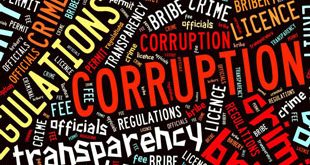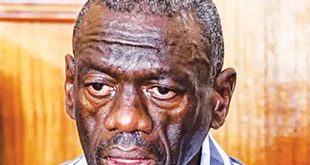
By Rajab Kakyama
Capitalism is the fullest expression of anarchism and anarchism is the fullest expression of capitalism
Refer to “America’s slippery slope” (The Independent July 05). Before George Orwell published his novel in 1948, Albert Einstein in 1917 wrote to a friend that “our much – praised technological progress and civilisation generally, could be compared to an axe in the hands of a pathological criminal.”
He was not to be the last as similar worries were echoed by Bill Joy of terrifying possibilities now attaching to robotics genetics and nanotechnology. In order to understand present-day terrorism, we have to consider two early ideologies that embraced violent social change. That is, Marxism (communism) and Anarchism. Both of which are Utopian.
Communism was based on economic class warfare, and assumed seizure of State power by the working class (proletariat) until the State became obsolete and was no longer needed. Anarchism, advocated more or less immediate rejection of all forms of governance.
The anarchists’ belief was that after the State is completely destroyed nothing will be required to replace it. And people could live and interact without governmental coercion. Of the two ideologies, anarchism survived into the modern era and retains attraction for violent extremism to this day.
Let us then establish a relationship between anarchism and capitalism. Anarchism, meaning “without rulers,” is a political philosophy which advocates for the abolition of governments. Capitalism, in a similar fashion means the private ownership of property.
The decisions regarding demand, supply, channeling, price and investment are made by private actors (the market) rather than governments. Economist, Murray Newton Rothbard the founder of libertarianism, in an interview with New Banner said that, “Capitalism is the fullest expression of anarchism and anarchism is the fullest expression of capitalism.”
Anarchism, often in league with rising nationalism was the most prominent ideology linked with terrorism. Attacks by various anarchist groups such as the Narodnaya Volya of Russia and the Ku Klux Klan in the United States used violence, lynching, murder and other acts of intimidation.
Richard English has referred to such attacks as the first acts of “republican terrorism.” The group is being considered as a precursor to the Irish Republican Army. By July 1941, Imperial Japan had ostensibly occupied Vietnam, Cambodia, Laos; these were at the time French colonies. President Roosevelt responded by freezing all Japanese assets in the United States.
This, among others is what sparked World War II. At the height of the war, the U.S. believed that the war could only end if the axis powers fully surrendered. For this, the U.S. decided to use the first atomic warfare in human history.
After the bombing of Hiroshima and Nagasaki, then-U.S. president Harry Truman was more than convinced that the “terror” caused was enough to stage himself as the leader of the “fiercest” nation in the World. Truman’s next move was to “maximize” the benefits from the Japanese bombardment. He embarked on the Marshall Plan.
Considered to be the most “innovative piece” of foreign policy in the American History, the Marshall plan was backed with the formation of the North Atlantic Treaty Organization (NATO).
Twelve nations agreed to sign a pact that stated in part, “an attack against one or more of them in Europe or North America shall be considered an attack against them all.” Considering what had happened to Japan, the Soviet leader Joseph Stalin came face to face with “fear” and consequently lifted the blockade on Berlin.
After the creation of NATO, the National Security Act, the CIA and the Marshall plan, America was dictating its position with Russia and Communism.
It was now clear that under fear, capitalism had to rule. Capitalism was on the rise and the “Apple pie” portrait of middle class families was shaping the country. America was now the wealthiest country in the world with an estimated accumulated savings over the US$140 billion mark by the year 1945. Over the next 20 years its GDP more than tripled from US$213 billion to more than US$500 billion. Real income rose by 25%.
During the same period, there was a 17% rise in the number of Americans who owned homes. This created a suburban explosion which was to symbolise capitalist supremacy over communism. The question remains, ‘At what cost?’
The Iran – Iraq war was one of a series of crises during an era of upheaval in the middle-East. The United States having decided that an Iranian victory was not to serve in their interests, began supporting Iraq. In February 1982, the state Department removed Iraq from its list of States supporting international terrorism.
Initially it was included because Iraq supported the Palestine Nationalists groups of 1967. The White House and State Department pushed the Export-Import Bank to provide Saddam with finances to enhance his government’s credit standing so that Iraq could access loans from International bodies.
By the summer of 1983, Iran had already complained of Iraq using chemical weapons. These fears were echoed again later that year but Iran received a muted response. In the November Department Report, it indicated that, “with the essential assistance of foreign firms, Iraq was able to deploy and use chemical weapons.”
As the war intensified, then-U.S. president Ronald Reagan responded with issuing a (NSDD) 114. It stated in part “Because of the real and psychological impact of a curtailment in the flow of oil from the Persian Gulf on the international economy, we must assure our readiness to deal promptly with actions aimed at disrupting the traffic.” It had no mention of chemical weapons.
Throughout the 1980s the Reagan administration down played Pakistan’s nuclear program, though Intelligence indicated that weapons capability was being pursued. This was because Pakistan provided support to the Mujahideen who at the time were fighting the Soviet occupation in Afghanistan. This is part of my work; Terrorism in the face of capitalism.
 The Independent Uganda: You get the Truth we Pay the Price
The Independent Uganda: You get the Truth we Pay the Price


